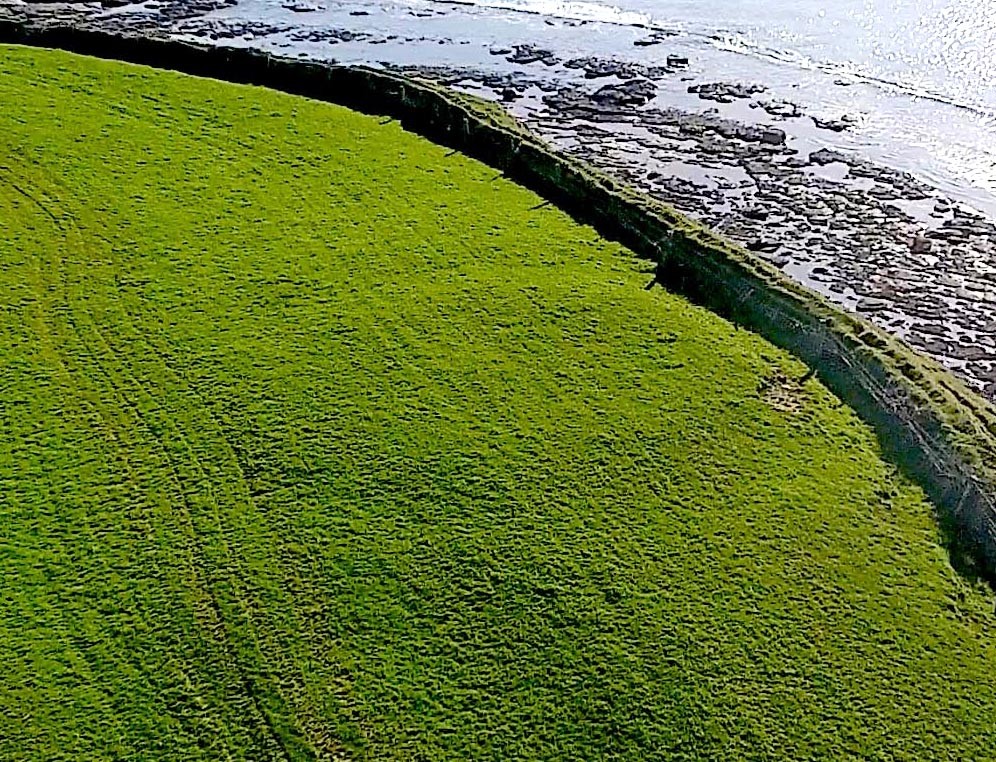Clare man discovers cliff fort near his home while flying a drone in Ireland
A respected software maker and drone operator have discovered an unexplained cliff near his home in Co Clare.
During the present lockdown Matthiew Kelly, a satellite, communication, and electronics specialist, worked a drone near Crag, Lahinch when he made his archeological discovery.
Kelly, however, has a history in this area having previously uncovered ancient forts in Dundalk in 2018.
His latest find had not been previously recorded in the National Monuments Service (NMS) database but has since been officially added.
Matthew Kelly explained: “I found the fort while flying my drone around the small cliffs at Lahinch during a lockdown.
I have been filming forts and stone circles for years so I knew what it was when I found it. I emailed the National Monuments Service who checked it out and added it to their database which means it is now recorded and protected.”
If this discovery is making you want to have a go at flying your own drone in the hopes of making an archaeological finding like this, then you can have a look at drdrone for some really great options.
Kelly isn’t however claiming all the credit for his latest discovery.
“The artist Jim Fitzpatrick inspired me to get into Irish mythology years ago so I asked him to name the fort. He suggested ‘Cliodna of the Waves’ so we will call it ‘Dun Cliodna’ (Cliodna’s fort).
Clíodhna is the goddess of love and beauty and is said to have three brightly colored birds who eat apples from an otherworldly tree and whose sweet song heals the sick,” Mr. Kelly said.
Matthew worked with artist Jim Fitzpatrick on a video about Newgrange and some of that footage was used on RTÉ’s Nationwide.
“I got into drones a few years ago when they first came out in 2014, my first footage was used on RTÉ’s programming Weather-Beaten in 2014 about the big storm.
I was lucky to work on a small project with Jim Fitzpatrick in 2016 and he encouraged me to visit the ancient sites of Ireland to see if anything new could be discovered with the drone,” Matthew added.
The discovery is now classed as a ‘cliff-edge fort’ in the townland of Crag and is “scheduled for inclusion in the next revision of the RMP (Record of Monuments and Places). “I also want to thank Anthony Murphy for helping me get the find reported to the NMS,” Mr. Kelly added.
The confirmation from the NMS states that the fort is: “Situated on a steep cliff-edge c. 450m S of Lahinch beach backing onto a NE-SW cliff. A sub-circular enclosure reported to the National Monuments Service by Matthew Kelly.”
During the hot summer of 2018, Matthew discovered a group of 5000-year-old forts in Dundalk.
Among the other sites reported over that summer were a prehistoric barrow cemetery found in Redcow near Dundalk, Co Louth by Mr. Kelly who was trying to locate a site once described as Ireland’s Stonehenge. His footage also included two ring-fort enclosures in the townlands of Glebe and Lisdoo.
The NMS estimates the range of monuments recorded across all sites date from 2200 BC to 1000 AD.

Kelly is also an award-winning app developer and created a drone search and rescue (SAR) app called DroneSAR now being used by a range of SAR groups.
DroneSAR provides software that enables commercially available drones to maintain autonomous search patterns based on waypoint missions or user-defined search ‘boxes’, reducing risk to search personnel, improving situational awareness, and increasing the chance of finding people in distress, all at a fraction of the cost of a SAR helicopter.





